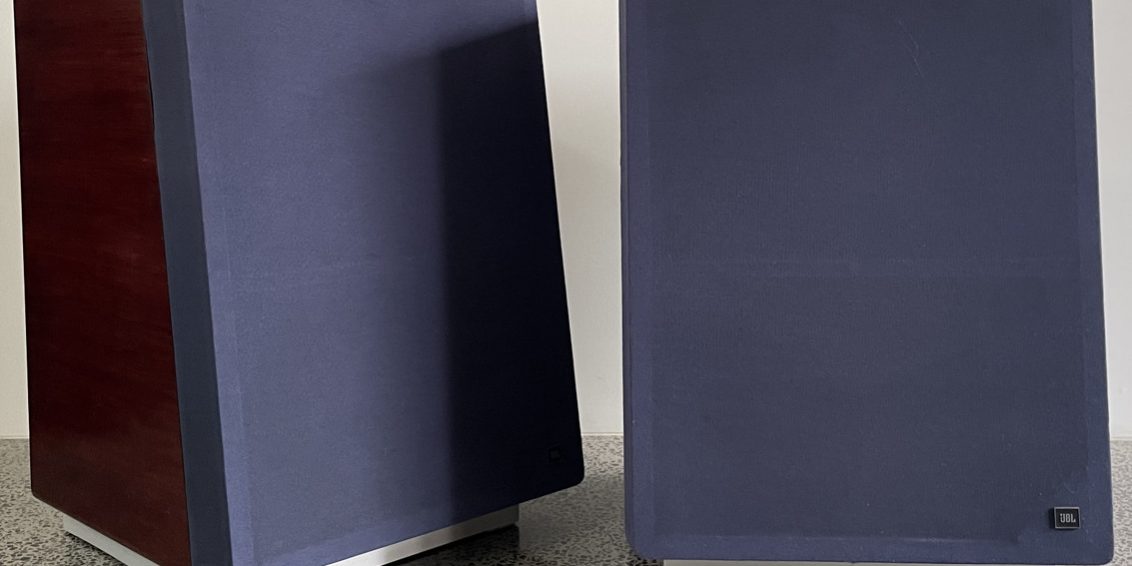WOLF retro DESIGN REVIEW. 10th October 2024
A retro review looks at products that are at least over ten years old from a present-day WOLF design perspective. While the technology and fashion of the period influence design, and are taken into consideration, great design ideas can transcend their eras to be timeless.
Interesting and factual information may be provided, but our review aims to deliver insight from the perspective of a designer’s mind and eyes.
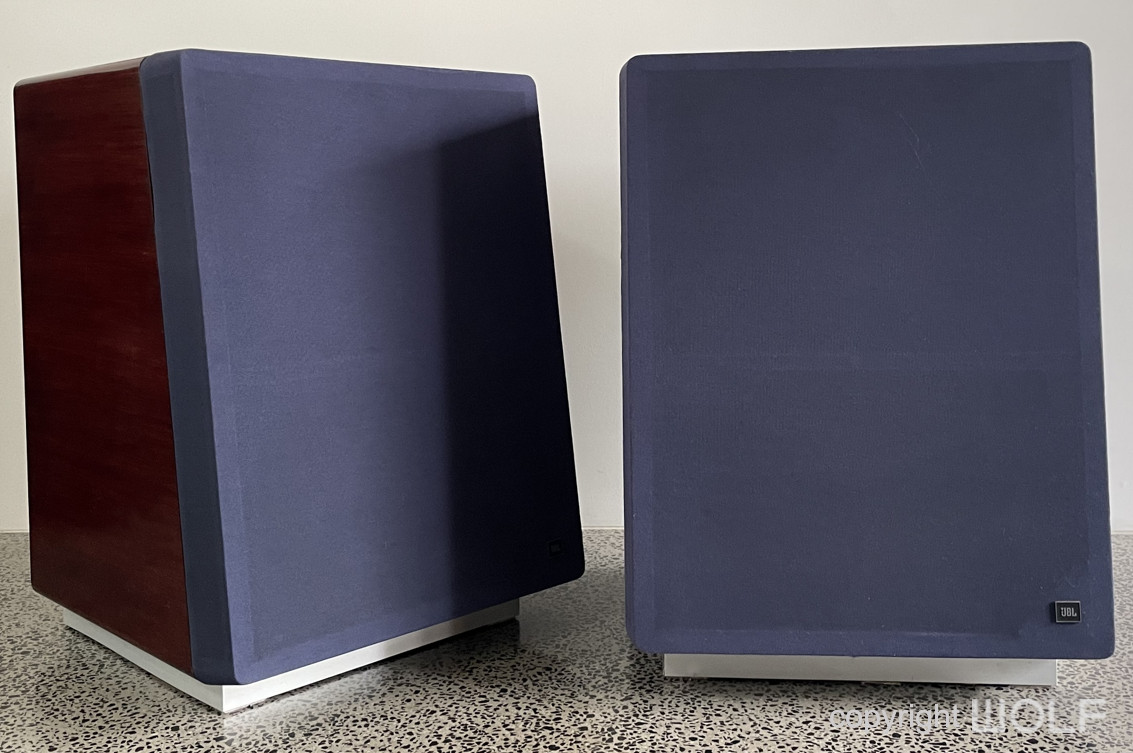
Almost half a century on and still singing.
Introduction
Product Focus
As with most reviews the focus is on a products design and its evolution within a particular industry. The functioning systems, technology and sound quality are not necessarily considered.
Product description
The JBL 300 Summit are High-End speakers released in 1975 and a built until 1982.
Price and Availability.
At the time of this review there were very few available for sale and from our research a good pair of working L300 speakers expect between US$4000 and US$6500 depending on condition. In Australia they are particularly rare as the few that reside in the country would have been privately imported at great expense since these are large & heavy. Expect to pay over $10,000 Aust if you are lucky enough to come across a pair.
Additional information
They were created as a home version of their 4333A studio monitors in a time when JBL were most recognised for their professional equipment. Thus, the L300 Summits were considered amongst the first of JBL’s home products.
Review
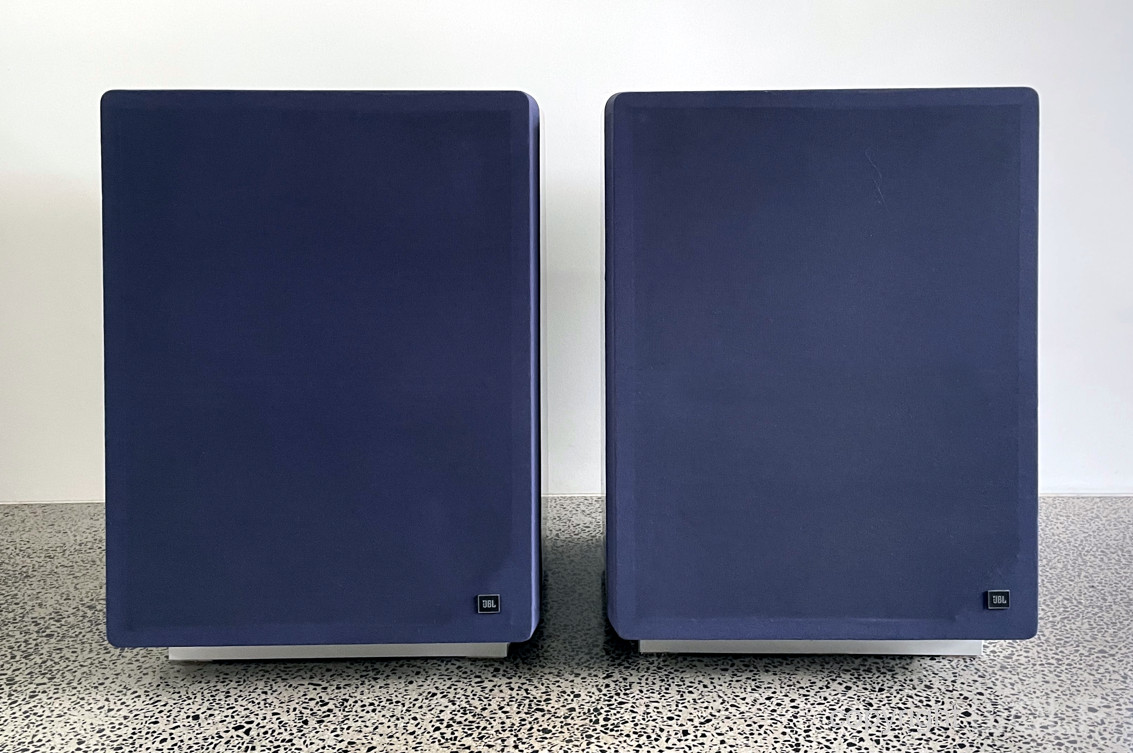
First impression/ Delight
Large speakers are not a common sight in today’s modern homes so these L300’s appears initially as rather odd pieces of furniture or some bulky type of pedestal. They are big and do not want to be moved around. Compared to modern high-end speakers that tend to be leaner and proportionately taller, these are stubby and fat. Despite its bulk however, there is still a sense of style in their design which we will dive into next.
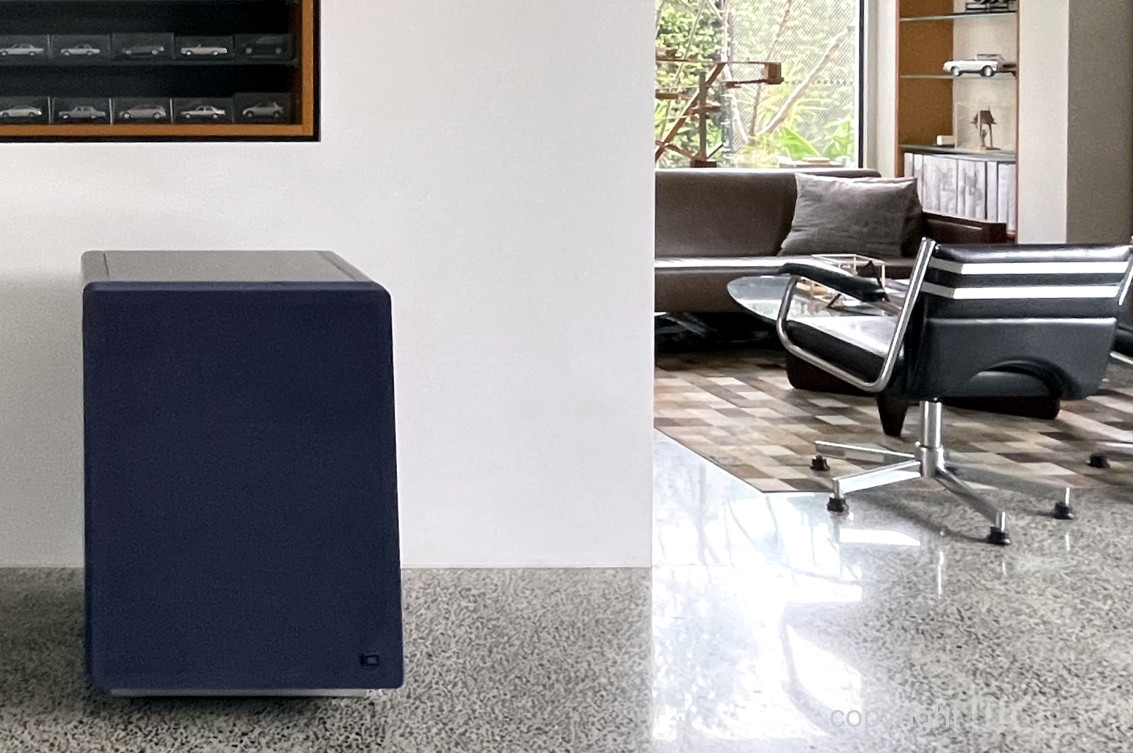

Exterior Design Review
The L300 is blocky and with approximate dimensions of 60cm x 60cm x 80cm they are not small. Although cubic in form these speakers can be distinguished by the slight wedged shape at the front. This elegant gesture, helps to modernise the design while slenderizing the bulk towards the top end. The sides of the cabinet are clad in genuine walnut veneer and curve around at both the top and bottom ends. These curves soften the overall bulk and help such imposing speakers feel more friendly. The speaker’s veneer in this review were custom stained mahogany to match the original owners 70’s décor.
Another distinguishing design feature is the smoked glass top that is framed by the veneered sides and cloth cover at the front. The cabinets are carefully crafted such that with glass, which on a layer of foam, is flush with its surrounding surfaces.
The 8cm thick speaker covers are removable and fully wrapped in JBL’s durable speaker fabric which was available in blue and camel colours. These covers have curved corners that follow on from the curve of the wood and further taper inwards. This tapering could almost be seen as a mistake as it is very subtle and hard to notice. At the bottom right of each cover is a small badge with the JBL logo.
At the base is a large 7cm recess and shadow line that help the speakers to appear lighter as if hovering above the ground. These were originally painted black but the ones in this review were custom clad in aluminium.
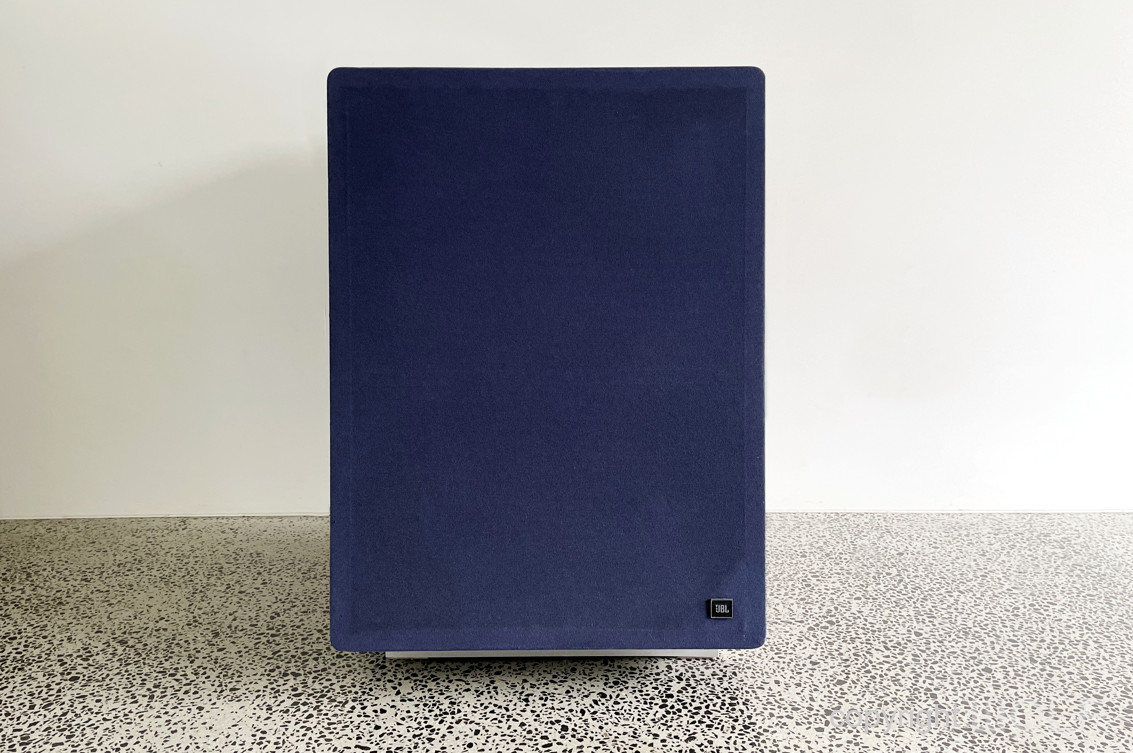
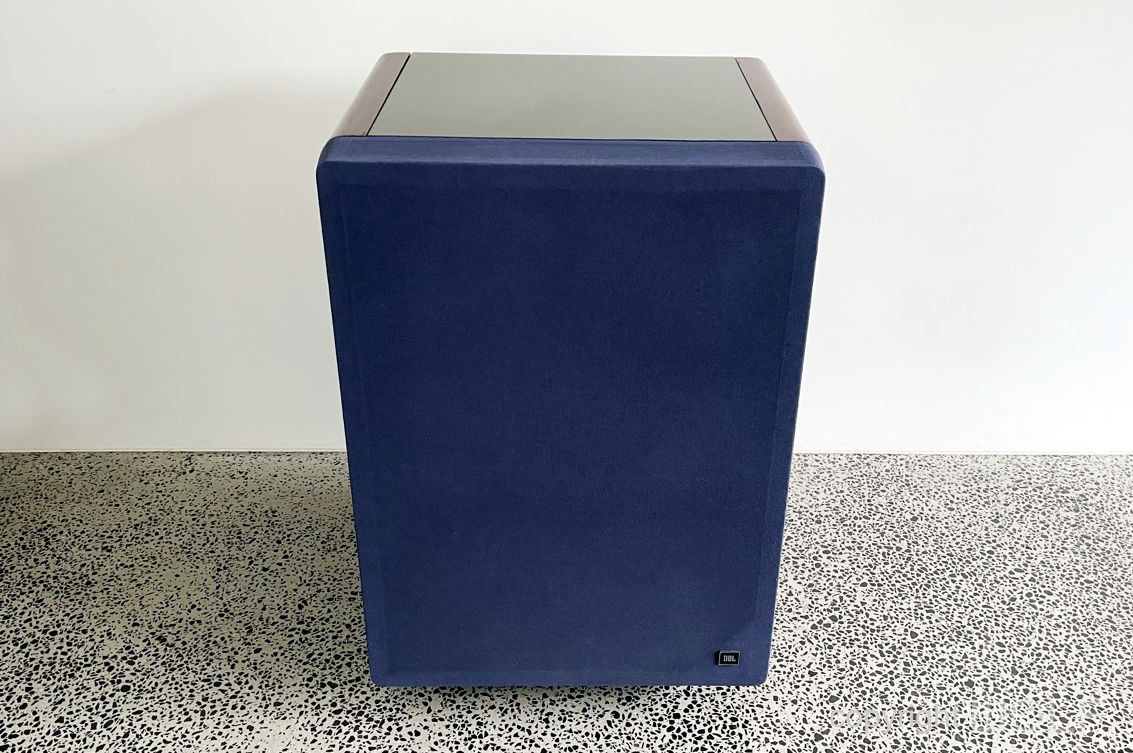
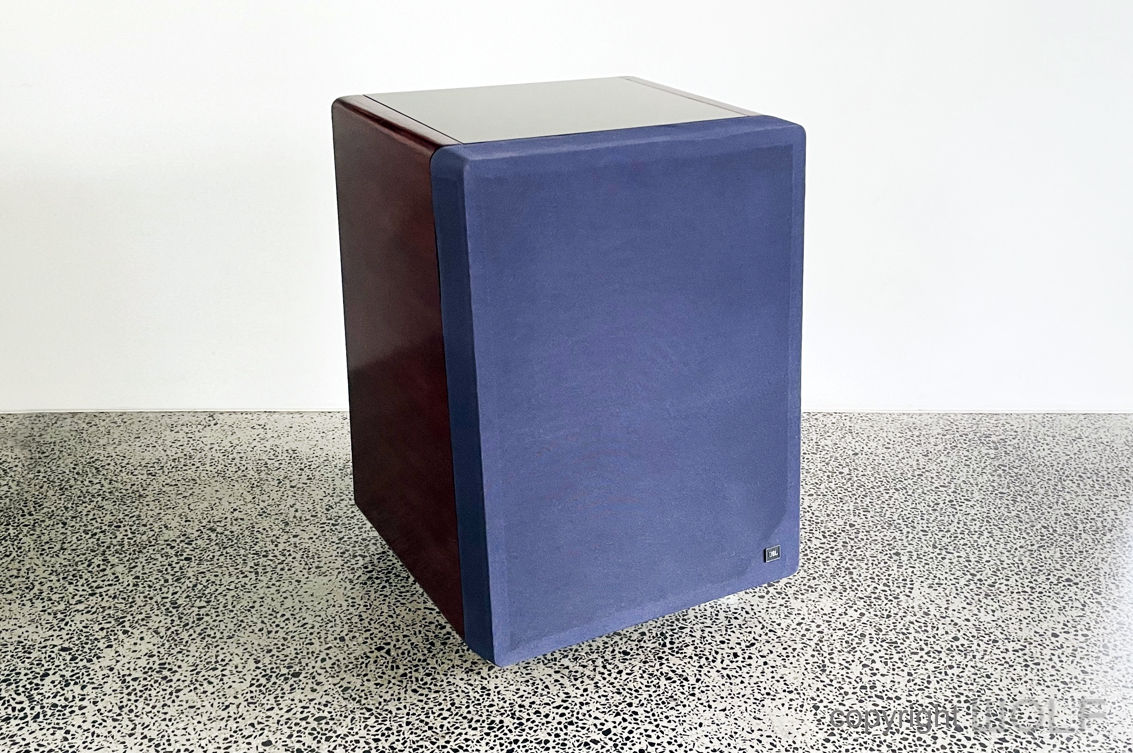
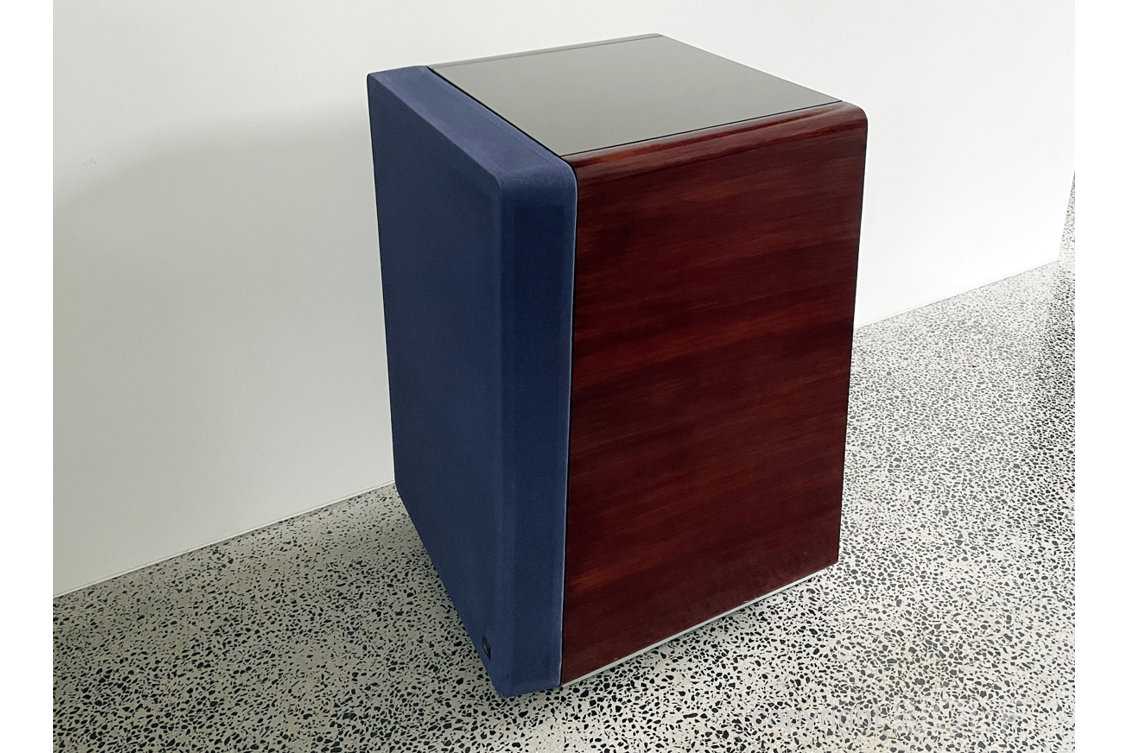
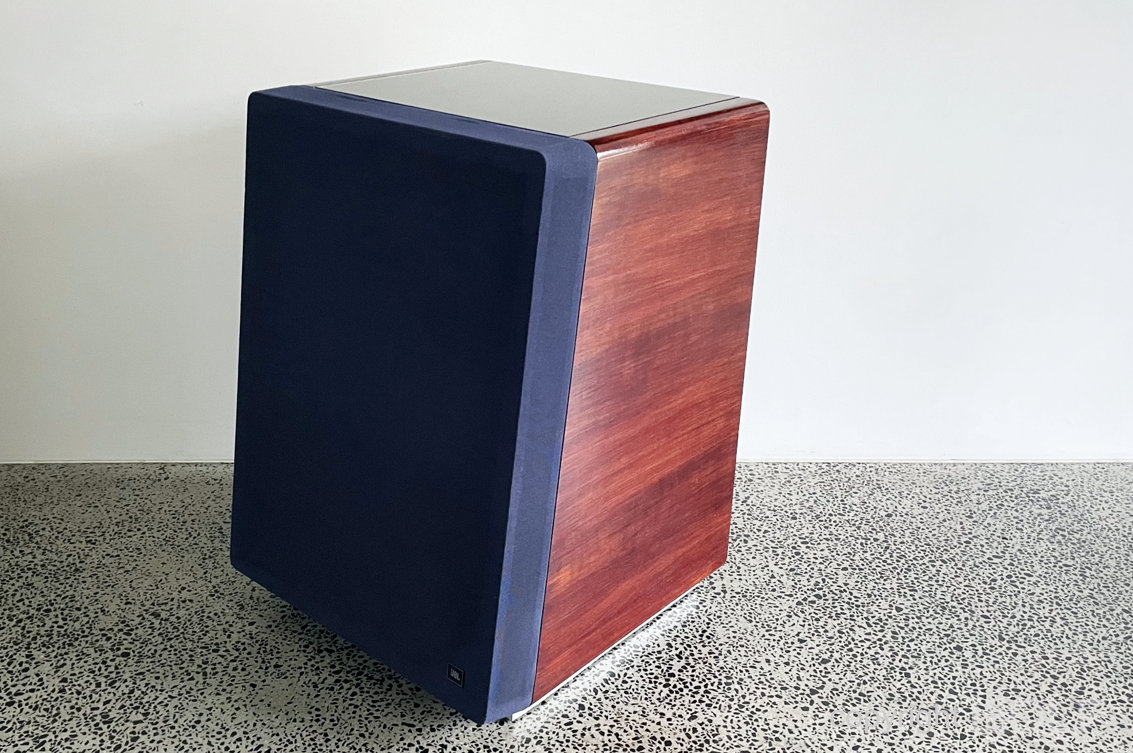
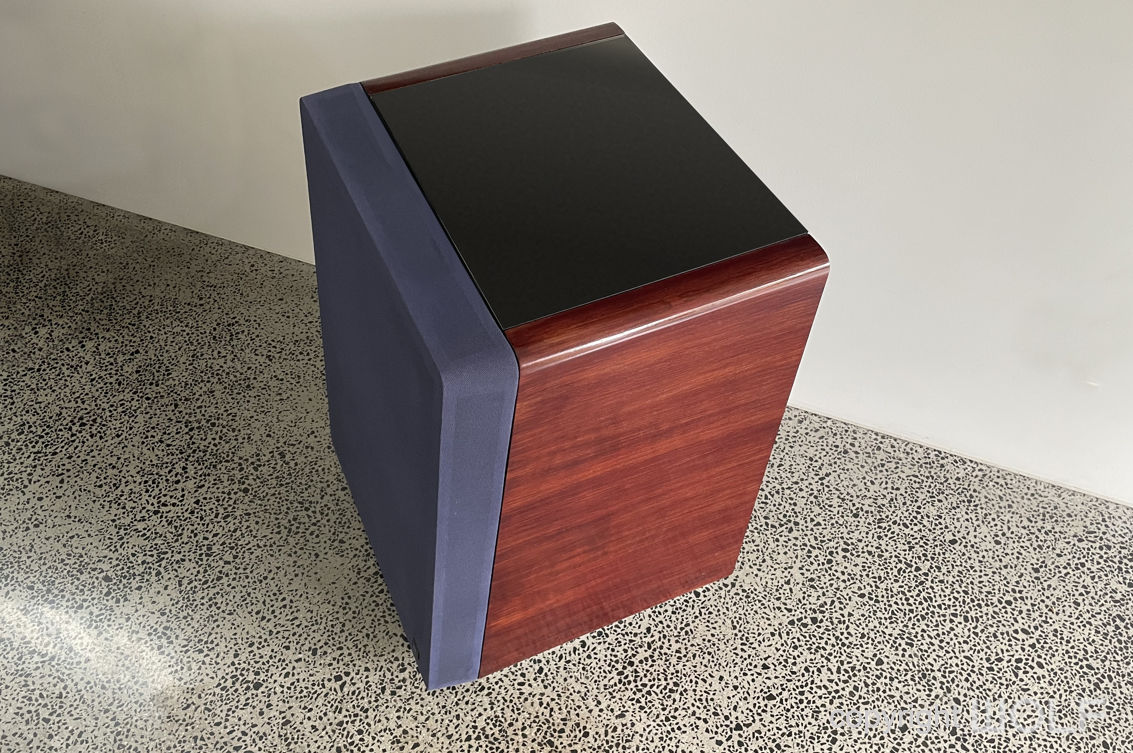
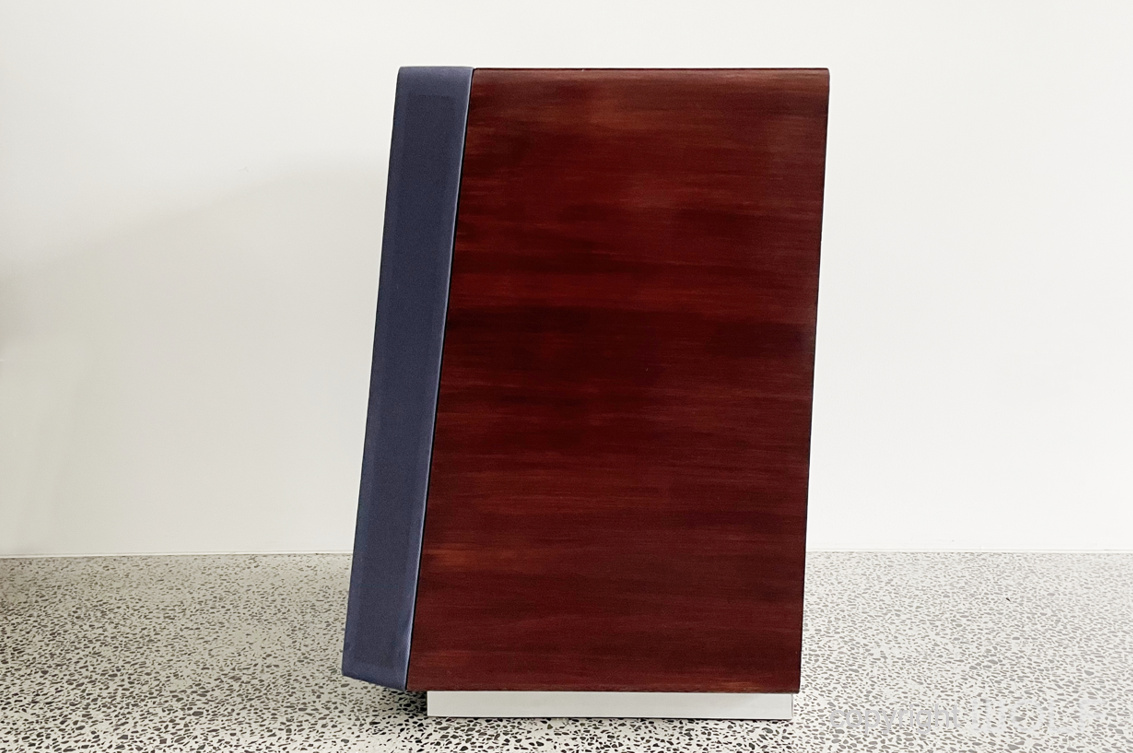
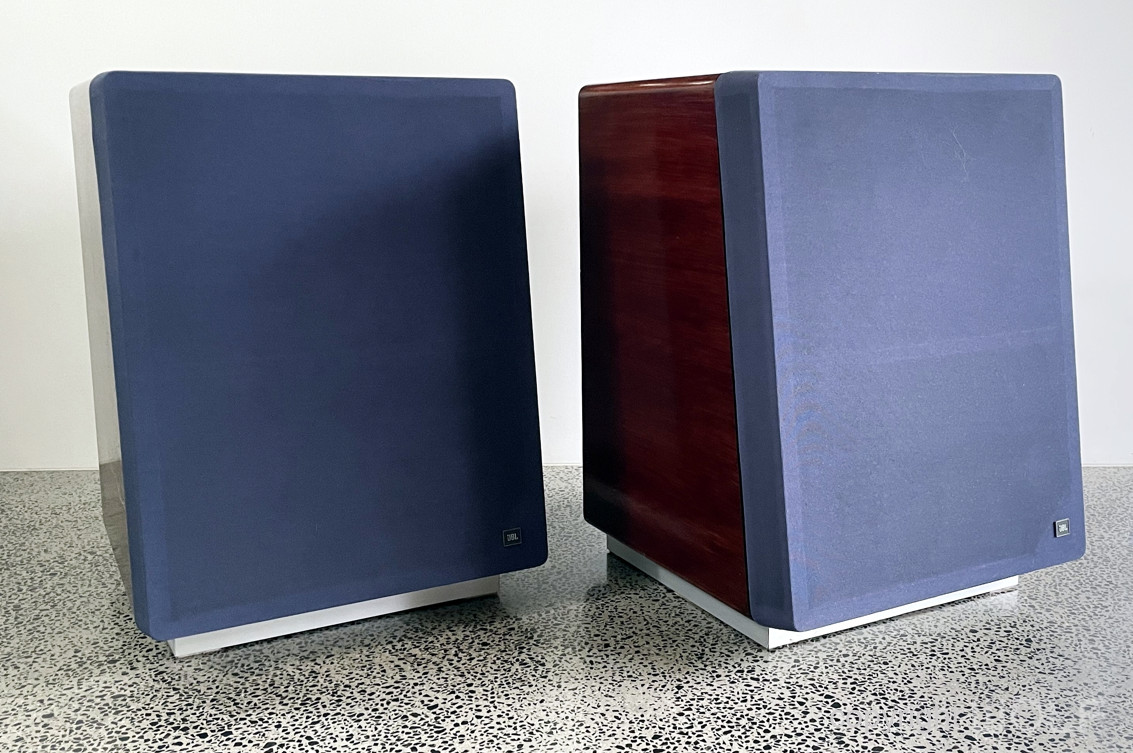
Craftsmanship.
As with most JBL products, these were built to last in a time when building a brand on quality was considered important. As expensive high-end speakers, most were and continue to be well-cared for so many still exist in very original condition. The timber veneer is thin and some will have age marks or damage which can hard be to repair. Evidenced from the backside, the main cabinet and structure is made of chipboard and painted black. The recessed base has this finish and prone to scuffing and moisture damage from water spills of floor mopping. The ones in this review were restored with aluminium veneers to be more resistant.
The original foam under the glass tops are prone to deterioration so most would have been replaced at least once by now. The speaker fabric is impressive, and as seen in this review, it’s possible to find L300 speakers with their original cloth covers.

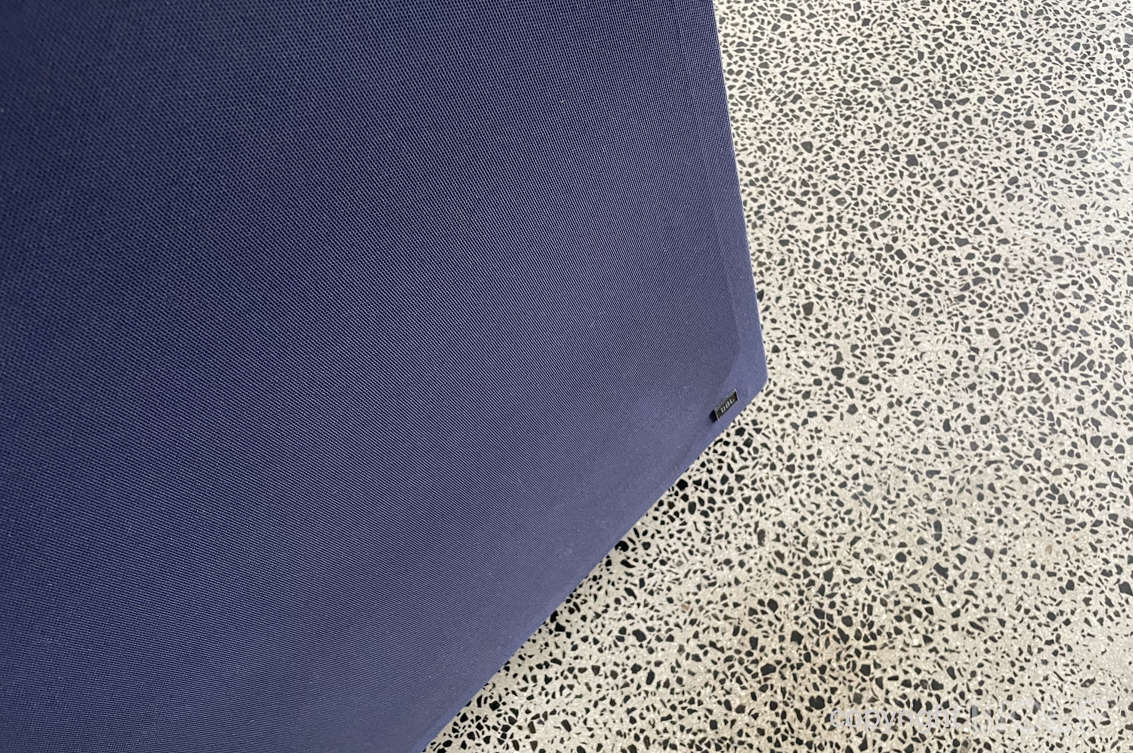


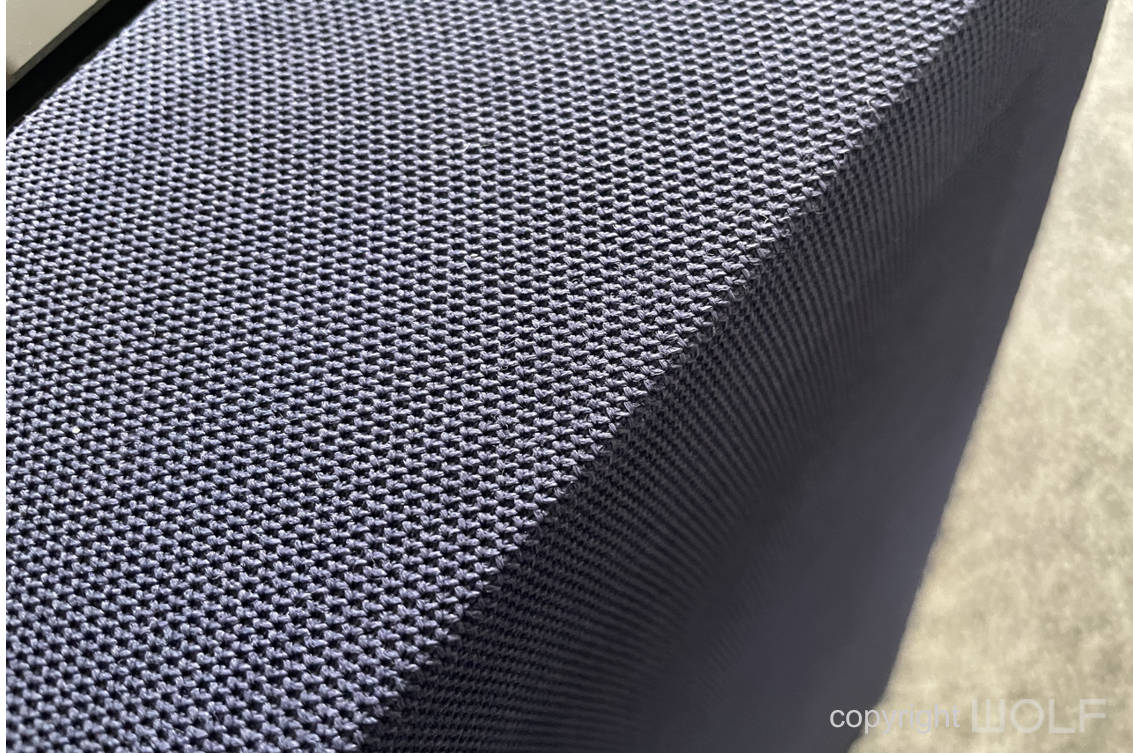



FUNCTION- Experience.
The L300 is bulky and heavy so wants to stay put as long as possible. The ones in this review are fitted with felt pads so sliding them on a smooth floor is not the hardest of tasks. Once in place the wire connections at the rear are simple and we like that they are recessed in a pocket which allows the speakers to be pushed right back against a flat wall. The generously recessed base also makes it possible to vacuum and mop up close to the speakers. At almost 50 years of age the chipboard material is relatively vulnerable, hence why the base of these speakers were retro fitted with aluminium panels.
The covers are attached by simple pegs and easily removed. Once off the speakers can be accessed easily for maintenance with adjustment for Presence and Brilliance. The smoked glass tops are a classy touch that is durable. Although enthusiasts may find it sacrilege, this generous topside area can be used for placement of plants, picture frames or ornaments.
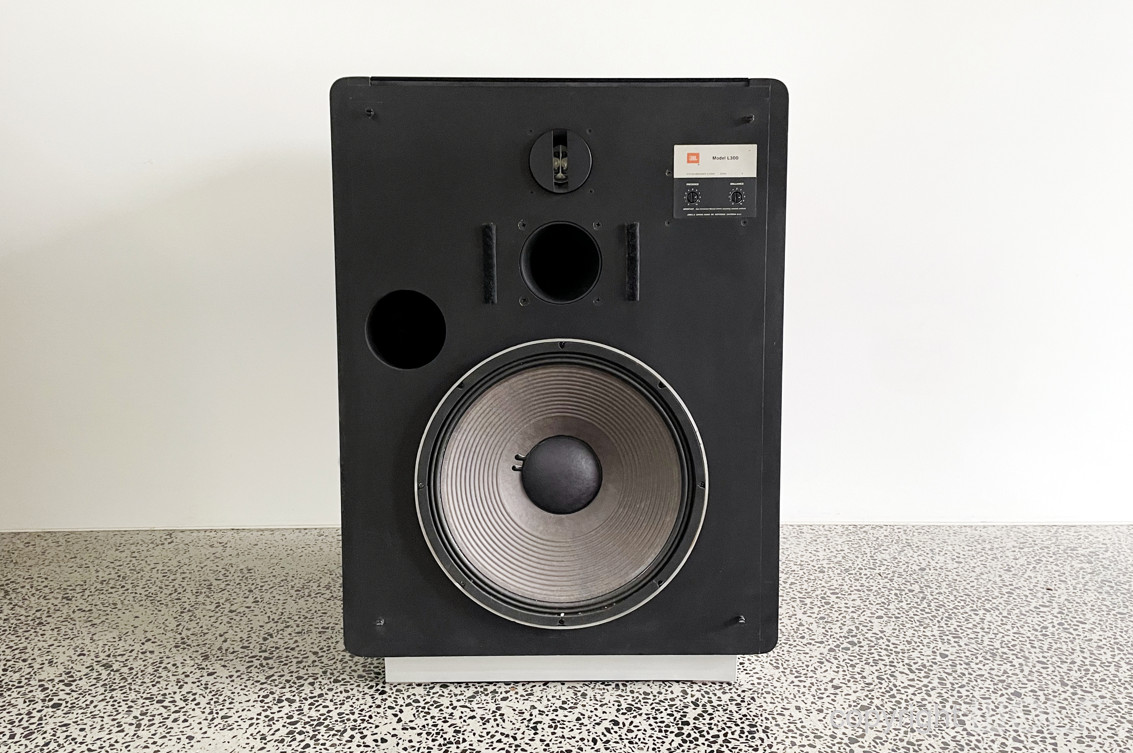




Desirability / Collectability and what to look for.
Our reviews are not meant to give comment on things like sound and technology but it was hard to ignore the many posts online that rave about the impressive sound of these speakers and rated them very respectfully, sometimes even better than contemporary speakers. This makes the L300 Summits even more impressive considering most are nearing 50 years of age at the time of this review. Vintage JBL products have in recent years drawn great interest from collectors and enthusiasts. High-end speakers like the Summits are now becoming very scarce. Good gold ones are particularly hard to find and this makes nice examples a solid investment. We advise purchasing from reputable sources that can verify that all components are correct and that the speakers sound as they should. Many will still have good original cabinets and speaker fabric but don’t be surprised if the speaker cones have been replaced at some point. The chances of finding one in Australia are super slim so with deep pockets you will will need to import them.

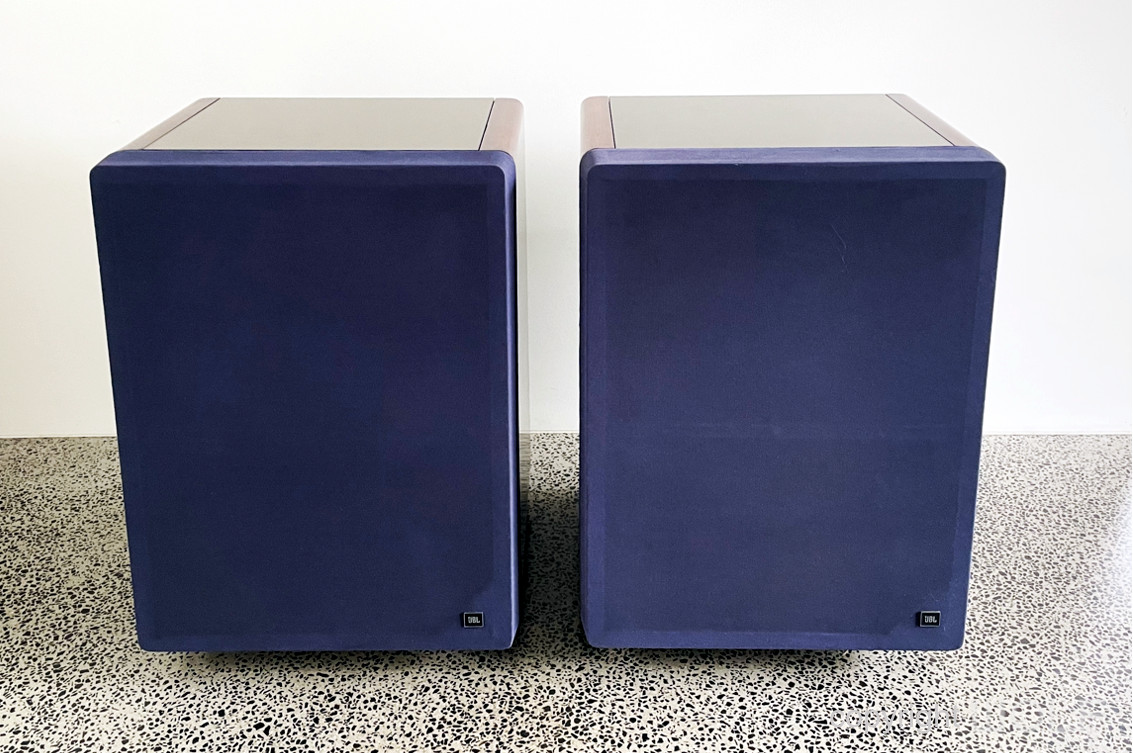

At the bottom right of each cover is a small badge with the JBL logo.
WORD OF THE WOLF
We don’t have any issues with the size of these speakers with consideration to their build and sound quality. If you have the space, they are well worth the effort and expense required for ownership. The design is excellent and although bulky back in the day the detailing is timeless and disguises them from being now half a century old.



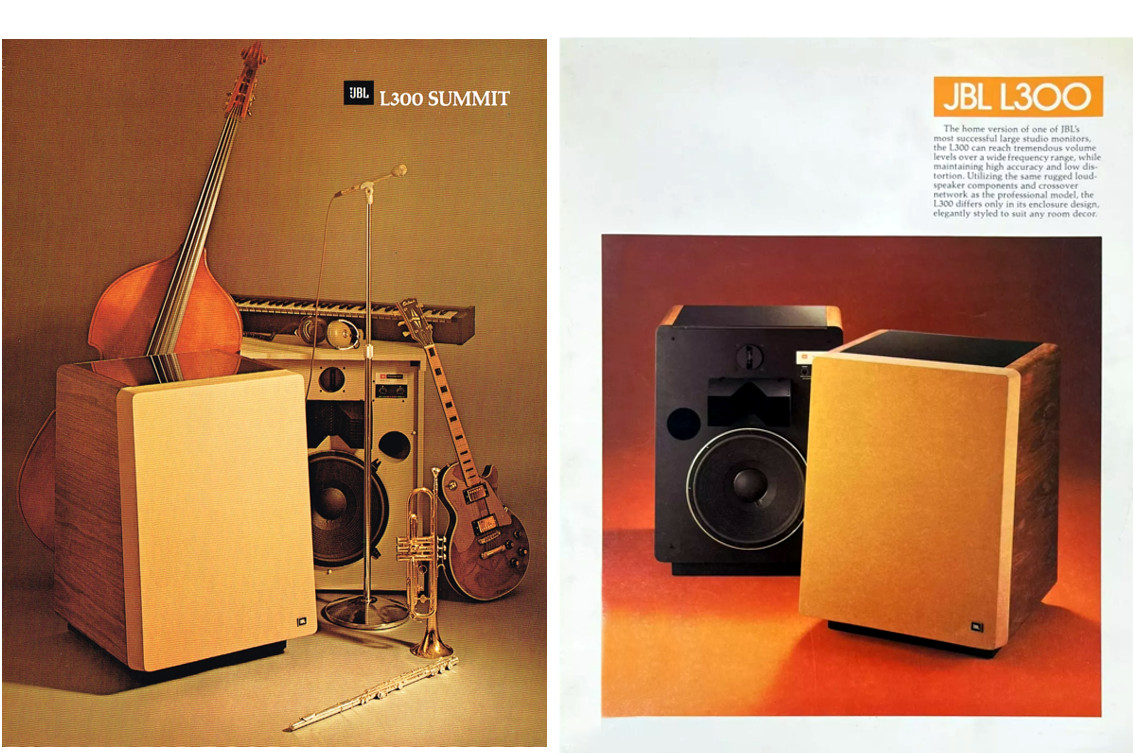
Two known colour brochures featuring the Summit with Camel cloth covers

(Left) The rear of this brochure features the alternative blue cloth cover. (Right)-Very rare- The original instruction manual.
WOLF DESIGN EXCELLENCE SCORE =7.7
Disclaimer
The information in this review is intended for informational or educational purposes to provide readers an understanding of how something may be seen from a certain design perspective. In this case it is from the view point of WOLF DESIGNS. As design is subjective this review should only be considered as an independent opinion. Information further to being of an opinion is provided to the best of our knowledge based on our own research at the time of doing the review. We cannot be held responsible for any inaccuracies or inconsistencies and reserve the right to change or update any content as appropriate.
The final responsibility of the design resides with the original manufacturer.
